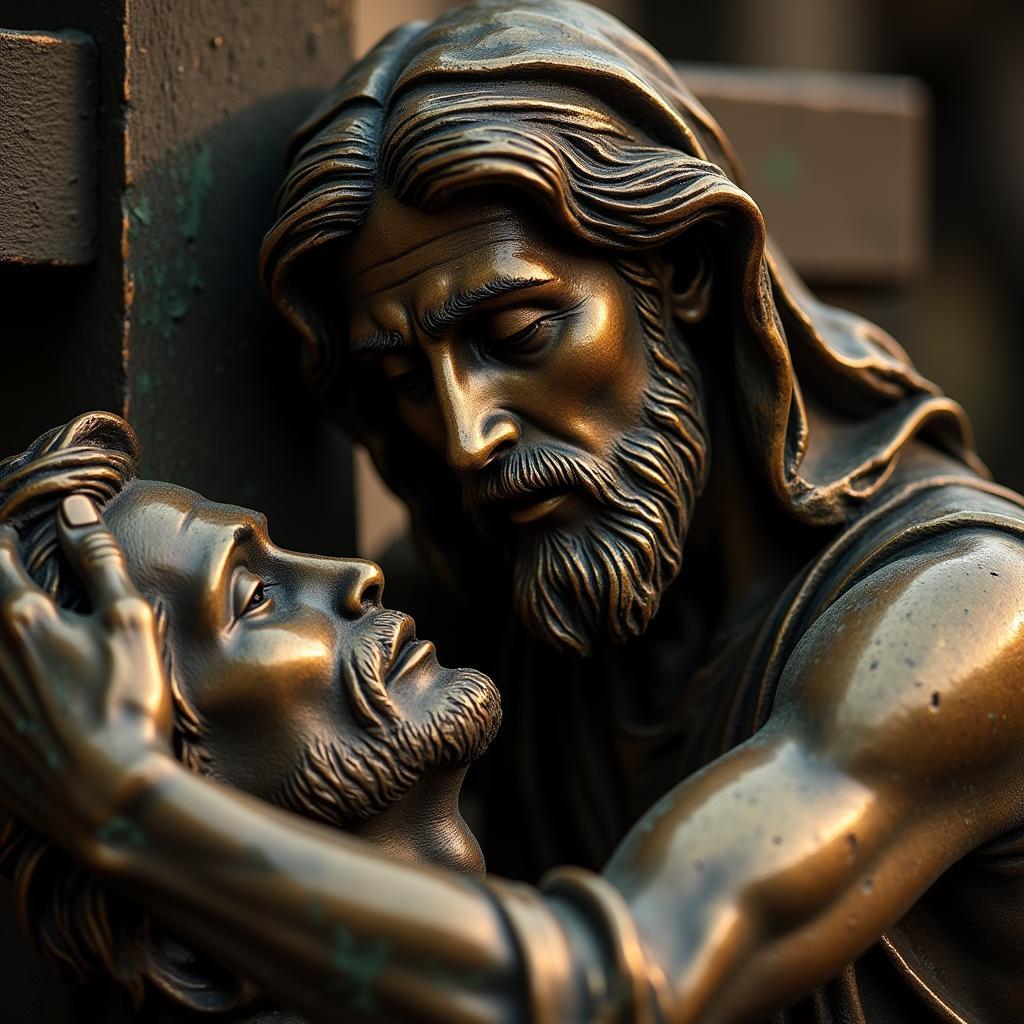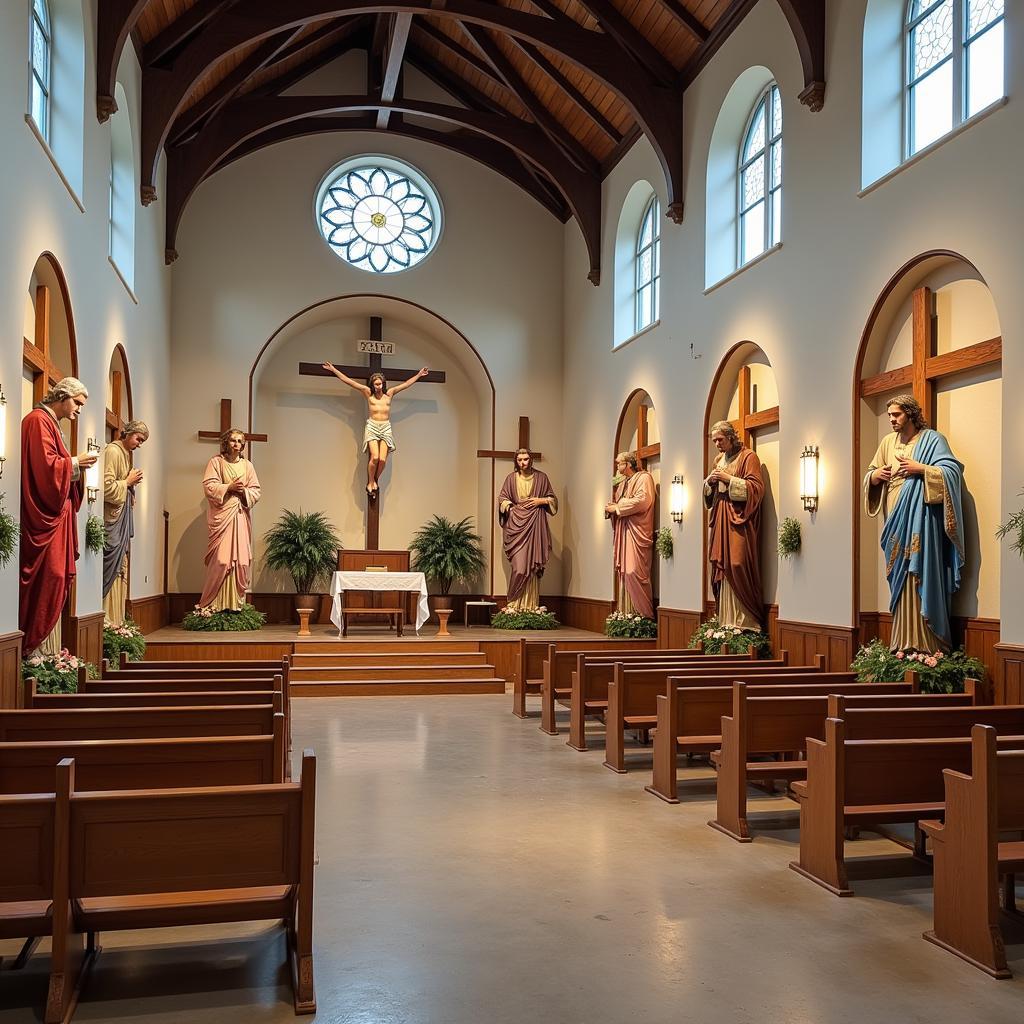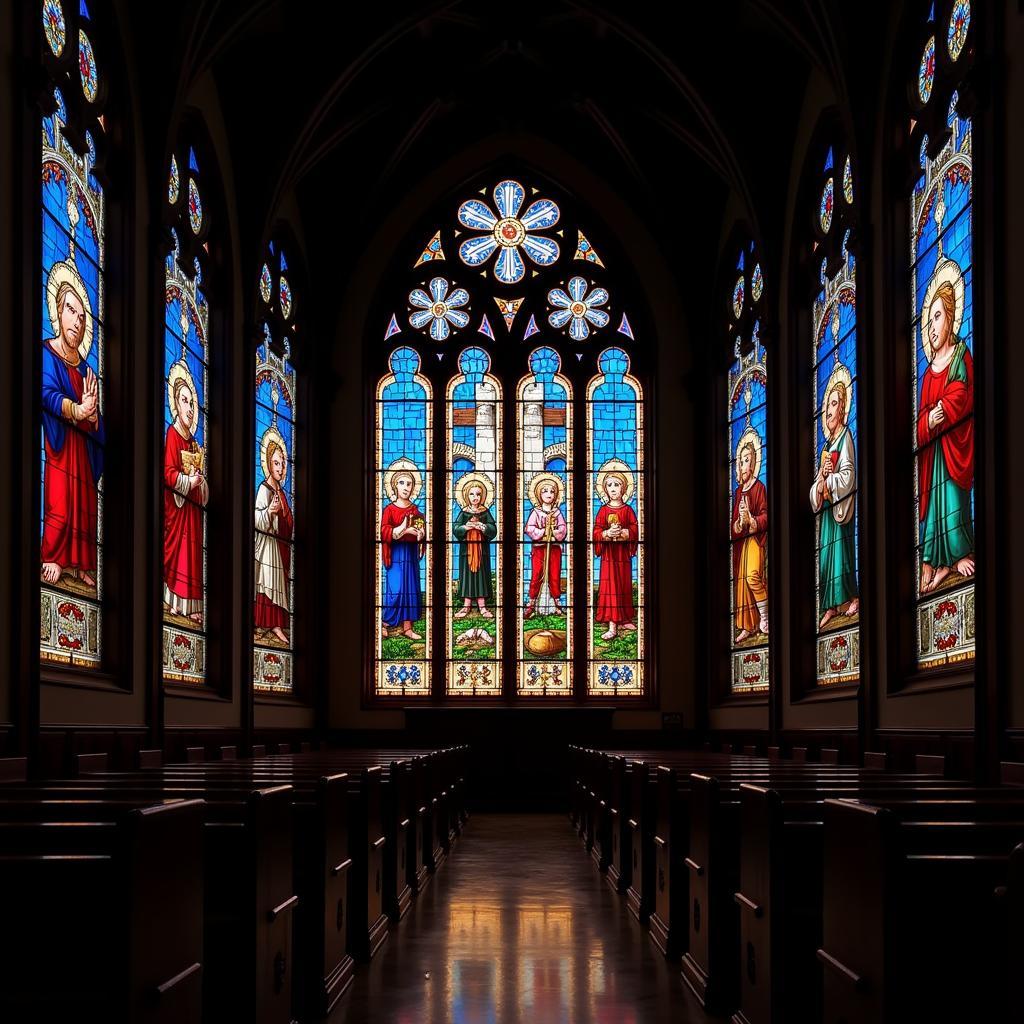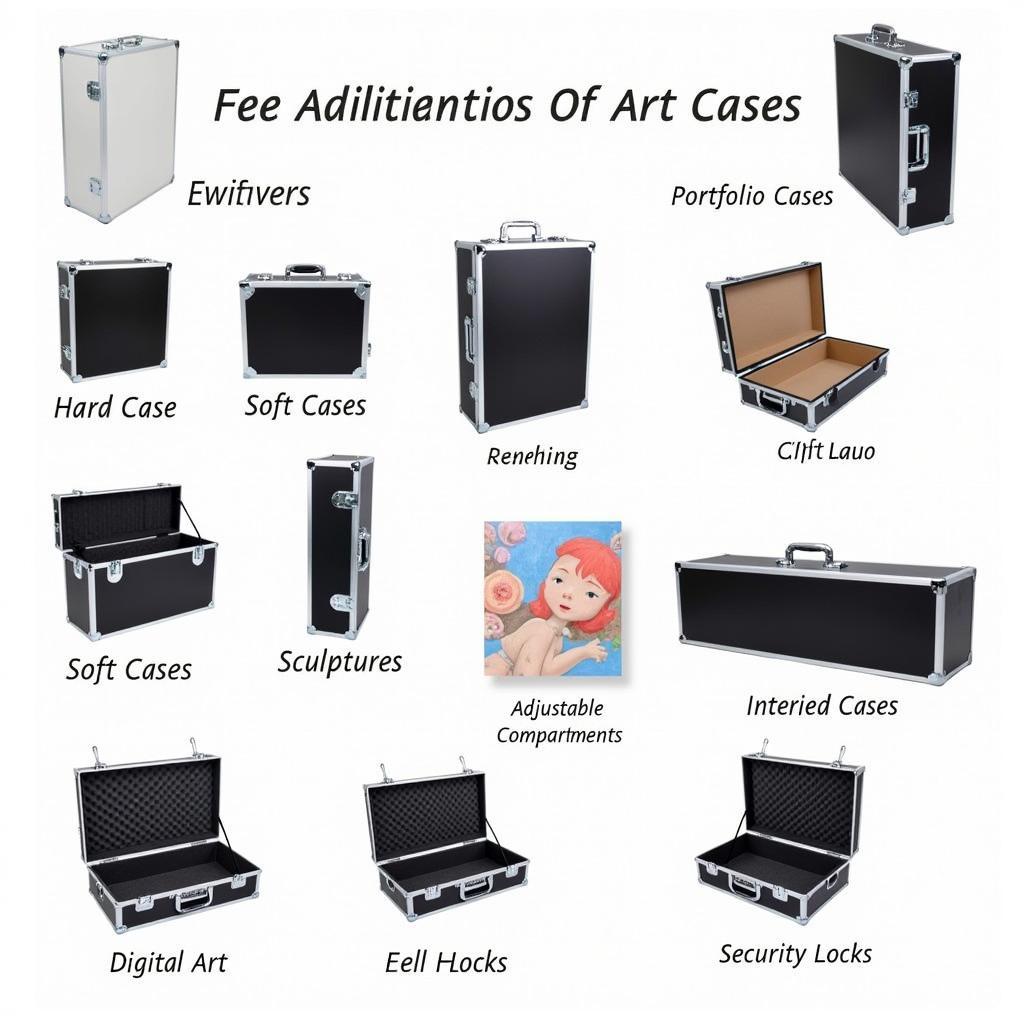Stations of the Cross Art: A Journey Through Faith and Creativity
Stations Of The Cross Art offers a powerful visual narrative of Christ’s final hours, guiding viewers on an emotional and spiritual pilgrimage. This art form, often found in churches and places of worship, transcends cultural and denominational boundaries, inviting contemplation, empathy, and understanding of the Christian faith.
 Stations of the Cross Sculpture
Stations of the Cross Sculpture
Unveiling the History and Significance
The tradition of the Stations of the Cross, also known as the Way of the Cross, emerged from the devotional practices of early Christians who sought to retrace Jesus’s steps during his Passion. As pilgrims journeyed to Jerusalem, they would physically walk the path, stopping at significant locations to meditate on Christ’s suffering. Over time, this practice evolved, and depictions of these stations began appearing in churches, allowing individuals to experience this spiritual journey without traveling to the Holy Land.
Exploring Diverse Artistic Interpretations
Stations of the Cross art encompasses a wide range of styles, mediums, and cultural influences. From traditional paintings and sculptures to contemporary installations and mixed media pieces, artists throughout history have infused their unique perspectives and artistic expressions into this timeless narrative.
 Modern Stations of the Cross
Modern Stations of the Cross
For instance, Baroque artists often employed dramatic lighting, theatrical compositions, and highly emotive figures to evoke visceral responses from viewers. In contrast, minimalist interpretations might utilize abstract forms and stark contrasts to invite contemplation and introspection.
Engaging with Contemporary Approaches
The Stations of the Cross continue to inspire contemporary artists who challenge traditional representations and engage with modern-day issues. Some artists incorporate social justice themes, addressing topics such as poverty, war, and immigration through the lens of Christ’s suffering. Others experiment with unconventional materials and digital mediums, creating immersive and interactive experiences that resonate with contemporary audiences.
“Art has the power to transcend time and connect us to the human experience across generations,” says renowned art historian Dr. Eleanor Vance. “The Stations of the Cross, reinterpreted through a contemporary lens, offer a poignant reflection on the enduring power of faith and resilience in the face of adversity.”
 Stained Glass Stations of the Cross Windows
Stained Glass Stations of the Cross Windows
Experiencing the Stations of the Cross Today
Whether encountered in a grand cathedral or a small chapel, Stations of the Cross art invites viewers to connect with the story of Christ’s Passion on a deeply personal level. By reflecting on each station, individuals can find solace, inspiration, and a deeper understanding of their own faith journey. Many churches and communities hold special services and processions during Lent, culminating in the remembrance of Christ’s crucifixion on Good Friday.
FAQs about Stations of the Cross Art
1. How many Stations of the Cross are there?
There are traditionally 14 stations, each depicting a significant event during Jesus’s journey to his crucifixion.
2. What is the purpose of meditating on the Stations of the Cross?
The Stations offer a structured way to reflect on Christ’s sacrifice, deepen one’s faith, and find spiritual solace and strength.
3. Can people of other faiths appreciate Stations of the Cross art?
Absolutely. While rooted in Christian tradition, the themes of sacrifice, compassion, and resilience resonate across cultures and belief systems.
4. Where can I find examples of Stations of the Cross art?
Churches, cathedrals, art museums, and online galleries often feature collections of Stations of the Cross art from various periods and styles. You can also find unique and contemporary interpretations at art festivals, such as the Lakefront Festival of the Arts 2024, that showcase diverse artistic expressions.
5. Are there virtual or online resources for experiencing the Stations of the Cross?
Yes, many websites and apps offer virtual tours, guided meditations, and artistic representations of the Stations, making this spiritual practice accessible to a wider audience.
Conclusion
Stations of the Cross art serves as a timeless testament to the power of faith, art, and human resilience. From traditional depictions to contemporary interpretations, this art form continues to inspire, challenge, and invite viewers to embark on a profound spiritual journey. By engaging with the imagery and symbolism, individuals can find meaning, solace, and a deeper connection to the human experience.
If you’re seeking a unique and enriching cultural experience, exploring the diverse world of Stations of the Cross art might be just the pilgrimage for you. For assistance or to learn more about our art workshops, feel free to contact us at: Phone: +842462573573, Email: [email protected], or visit us at: Savico Megamall, 7-9 Nguyen Van Linh Street, Gia Thuy Ward, Long Bien District, Hanoi 10000, Vietnam. We have a dedicated customer support team available 24/7 to assist you.




